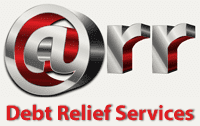In our last blog, we talked about how bankruptcy works and what you can expect to do. Andrea Orr is a Licensed Insolvency Trustee (LIT), an expert in her field, who shares her insight into the choices you need to make as you approach your case.
Learn about tax debt relief options to keep more money in your pocket and lessen the harsh consequences of a tax debt hanging over your head.
1. Failure to file and pay taxes on time can be costly.
The Canada Revenue Agency (CRA) may resort to applying interest and penalties in cases where taxes have either not been filed or haven’t been paid on time. This in turn may lead to a significant increase to your original debt.
Failure to file or pay taxes may result in the CRA:
- Seizing assets
- Garnishing ones wages
Learn more about Interest and Penalties in Paying late taxes
2. Your Tax debt never expires.
- Tax debt typically has no statute of limitations. Even though many taxpayers believe their tax debt will “drop off” over the years, this is not the case.
- If you do not resolve your tax debt, it will continue to accrue interest and penalties.
- Tax debts are forever unless you deal with them. The only way to resolve a tax debt is to pay it off or have it transcribed and removed from your credit report. Read more about How long Bankruptcy can last
3. Your employment income and other sources of income could be at risk.
Unpaid tax debt can affect your employment income. It often happens if your employer withholds taxes to pay for an outstanding balance of debt that you owe. Your current and future family’s wellbeing is also at risk – if you fail to pay your taxes, it can result in a garnishee notice on your wages and other assets of the company or person liable under the garnishee notice. Your employment income and other sources of income could be at risk.
The CRA has 90 days of your Notice of Assessment / Reassessment date to start legal action against you; if they do not take action within this period, then it becomes void. The second thing is that the legal warning usually consists of:
- A verbal legal warning call
- Written legal letter warning
4. Tax debt forgiveness is a real option
If you have debts that you can’t pay or have been struggling to make payments on, there are options available to help you get on the path toward financial security:
- Bankruptcy, is a form of debt relief that allows you to discharge (wipe out) your debts. If your situation leaves you unable to afford any meaningful repayment of your debts, filing for bankruptcy can allow you to have complete forgiveness for virtually all your debts. Consumer Proposals are also an effective way to deal with CRA debt.
- Working alongside a Licensed Insolvency Trustee who can help manage your debt through their wealth of knowledge in the field and get on the road to rebuilding your worth.
- Only a Licensed Insolvency Trustee can help you reduce tax or government debt through a consumer proposal or a bankruptcy.
If you have tax debt from a previous year, whether it was just discovered or you have been aware of it for some time and have been ignoring it, the time has come to put your tax debt problems behind you. The sooner you get your tax debt under control, the sooner you will begin to repair your credit and enjoy the benefits of regaining financial control over your life.
Skip the collection calls and the stress. Take control of your unsecured debts and start over financially with a Licensed Insolvency Trustee – located in Windsor Ontario. Book a free debt consultation today!









Leave A Comment
You must be logged in to post a comment.